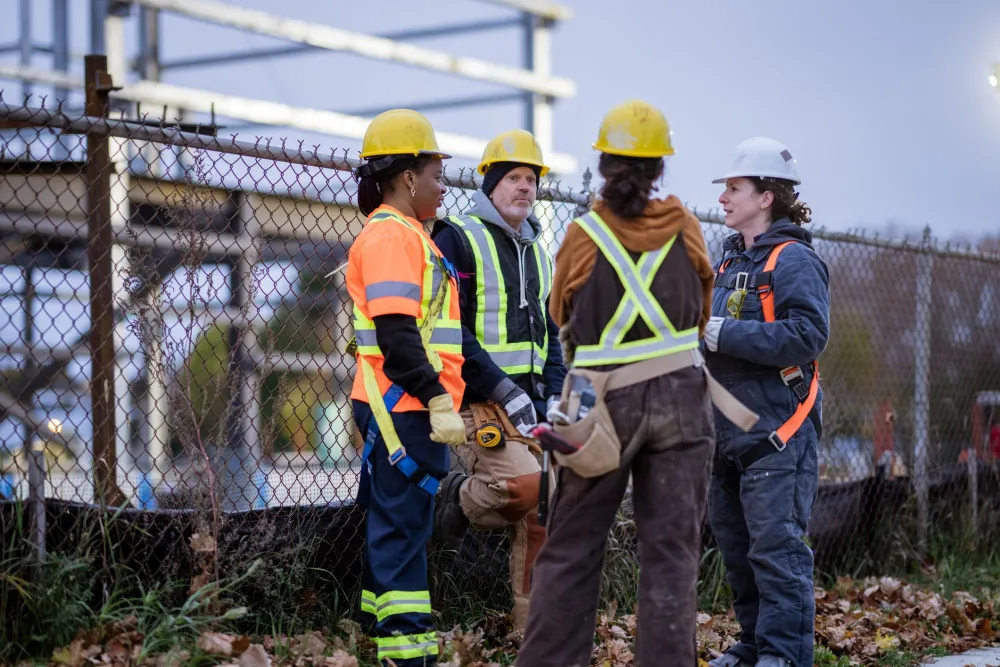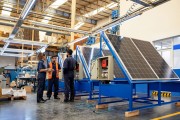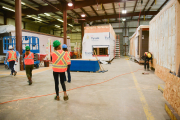Canada’s energy economy is shifting — and with it, so is the future of work. For our new federal leader, the mandate is clear: we need to make sure workers are ready for change and well positioned to take on the jobs of a clean energy economy. Supporting workers must be central to Canada’s economic agenda.
Right now, the future feels unpredictable, and opportunities for all Canadians are not guaranteed. Global uncertainty and new tariffs have disrupted momentum in the growth and evolution of cornerstone industries — the industries that helped build Canada’s economy, including auto manufacturing, steel and aluminum — leaving nearly one million workers in a holding pattern.
We are counting on workers to build Canada’s clean energy future, and they are already doing the work. They are retrofitting homes and offices to be more energy efficient. They are assembling electric vehicles, building charging networks and constructing the transmission lines that distribute clean power. They are extracting the minerals needed for advanced technologies and batteries.
This is the new energy economy — and it’s already here. As Canada transitions to the new energy economy, jobs are shifting. Now tariffs are adding new pressure to industries already navigating change driven by global market shifts, automation, labour shortages and rapid technological advancement. We need a plan that supports workers through moments of disruption and prepares them for the opportunities ahead.
A moment of disruption — and a chance to lead
Tariffs have created new uncertainty in industries already navigating the transition to a low-carbon economy, with real consequences: a two-week shutdown at Stellantis’ Windsor plant affected up to 12,000 workers; hundreds of steel and aluminum workers have been laid off; and a growing number of companies are citing tariffs as the reason for job losses and slowed operations.
On the campaign trail, the now-elected federal government pledged to support workers and industries facing economic shifts. Among those commitments were: investing revenue from counter-tariffs to support workers in the hardest-hit sectors, including by expanding Employment Insurance; providing apprenticeship grants and increasing access to union-led training initiatives; eliminating interprovincial trade barriers; and building out East-West infrastructure to strengthen trade and energy transmission.
These commitments align with what labour leaders have been calling for. Acting on them swiftly will help ensure workers don’t fall through the cracks and that Canada remains competitive. This is a chance for the federal government to show leadership — and to deliver results now.
Building a workforce ready for the future
If Canada is serious about competing in the new energy economy, it needs to support the workforce that will build it — both those facing immediate disruption and those training for what’s next. This will require close collaboration between federal and provincial governments to align training, support and investment priorities across regions.
That means:
- Targeted income support for workers in vulnerable sectors, especially those affected by tariffs and shifting global dynamics, to ensure they don’t fall behind during economic transitions
- Developing long-term workforce strategies that connect Canadians to jobs with long-term security in energy, construction, manufacturing and other key industries
- Modernizing skills and training programs to reflect the pace and scale of change across Canada’s energy and industrial sectors, using new methods of attracting and incentivizing people to take up careers in the skilled trades we rely on
- Investing strategically in infrastructure, interprovincial trade and clean energy projects to drive competitiveness and ensure the benefits are shared widely
This is an opportunity to move quickly on commitments that matter most now. Canada’s next cohort of federal leaders must act. They will be judged not just by what they say, but by whether they deliver for workers in a time of growing uncertainty — and growing opportunity.










